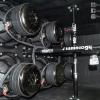-
Recently Browsing 0 members
No registered users viewing this page.
-
-
Recent Topics
-
- 1 comment
- 0 views
-
- 19 comments
- 368 views
-
- 3 comments
- 91 views
-
- 398 comments
- 33,953 views
-
- 4 comments
- 182 views
-
- 2 comments
- 753 views
-
-
-
Recent YouTube Posts




